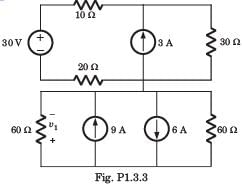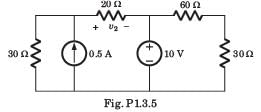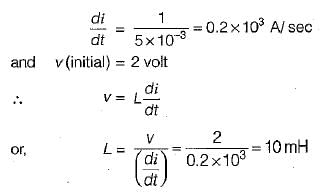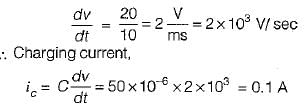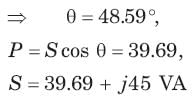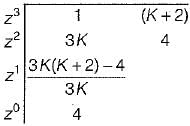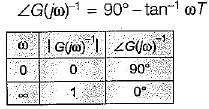Test: ESE Electrical - 8 - Electrical Engineering (EE) MCQ
30 Questions MCQ Test - Test: ESE Electrical - 8
The current and voltage profile of an element vs time has been shown in given figure. The element and its value are respectively:

Figure shown below exhibits the voltage-time profile of a source to charge a capacitor of 50 μF. The value of charging current in amperes is:

The equivalent capacitance across the given terminals A-B is:
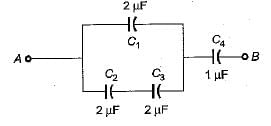
Determine the complex power for hte given values in question.
S = 60 VA, Q = 45 VAR (inductive)
Which among the following is regarded as short circuit forward transfer admittance?
If the load impedance is Z∠Ø, the expression obtained for current (IB) is?
The three impedances Z1 = 20∠30⁰Ω, Z2 = 40∠60⁰Ω, Z3 = 10∠-90⁰Ω are delta-connected to a 400V, 3 – Ø system. Find the line current I2.
The force on a conductor of length 12cm having current 8A and flux density 3.75 units at an angle of 300 is
The force per unit length of two conductors carrying equal currents of 5A separated by a distance of 20cm in air(in 10-6 order)
The impulse response of a causal, linear, time- invariant, continuous time system is h(t). The output y(t) of the same system to an input x(t). Where x(t) = 0 for t < -2 is
Which of the following has to be performed in sampling rate conversion by rational factor?
Which of the following operation is performed by the blocks given the figure below?
Determine the time signal x(t) corresponding to given X (s) and choose correct option.
Q. 
Determine the time signal x(t) corresponding to given X (s) and choose correct option.
Q. 
Determine the Fourier series coefficient for given periodic signal x(t).
Q. x(t) as shown in fig. P5.7.1
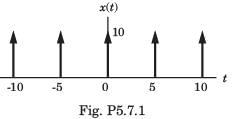
Determine the Fourier series coefficient for given periodic signal x(t).
Q. x(t) as shown in fig. P5.7.2

In the question, the FS coefficient of time-domain signal have been given. Determine the corresponding time domain signal and choose correct option.
Que: X[k] As shown in fig. , ωo = π
A band-limited signal with a maximum frequency of 5 kHz is to be sampled. According to the sampling theorem, the sampling frequency which is not valid is
The total number of complex multiplications required to compute N point DFT by radix-2 FFT is:
The realization of FIR filter by frequency sampling realization can be viewed as cascade of how many filters?
Which of the following is a frequency domain specification?
Assertion (A): Closed loop control systems are known as feedback control systems.
Reason (R): In closed loop control systems, the control action is dependent on the desired output.
The relationship between an input and output variable of a signal flow graph is given by the net gain between the input and output node is known as the overall______________
The damping ratio of a system having the characteristic equation s2 + 2s + 8 = 0 is
What is the range of values of K (K > 0) such that the characteristic equation
s3 + 3 (K + 1)s2 + (7K + 5)s + (4K + 7) = 0
has roots more negative than s = -1?
The breakaway point in the root loci plot for the loop transfer function

The inverse polar plot of the open loop transfer function, G(s) = (1+sT)/(sT) will be re presented by


